Cameras and Sensors for Embedded Vision
WHILE ANALOG CAMERAS ARE STILL USED IN MANY VISION SYSTEMS, THIS SECTION FOCUSES ON DIGITAL IMAGE SENSORS
While analog cameras are still used in many vision systems, this section focuses on digital image sensors—usually either a CCD or CMOS sensor array that operates with visible light. However, this definition shouldn’t constrain the technology analysis, since many vision systems can also sense other types of energy (IR, sonar, etc.).
The camera housing has become the entire chassis for a vision system, leading to the emergence of “smart cameras” with all of the electronics integrated. By most definitions, a smart camera supports computer vision, since the camera is capable of extracting application-specific information. However, as both wired and wireless networks get faster and cheaper, there still may be reasons to transmit pixel data to a central location for storage or extra processing.
A classic example is cloud computing using the camera on a smartphone. The smartphone could be considered a “smart camera” as well, but sending data to a cloud-based computer may reduce the processing performance required on the mobile device, lowering cost, power, weight, etc. For a dedicated smart camera, some vendors have created chips that integrate all of the required features.
Cameras
Until recent times, many people would imagine a camera for computer vision as the outdoor security camera shown in this picture. There are countless vendors supplying these products, and many more supplying indoor cameras for industrial applications. Don’t forget about simple USB cameras for PCs. And don’t overlook the billion or so cameras embedded in the mobile phones of the world. These cameras’ speed and quality have risen dramatically—supporting 10+ mega-pixel sensors with sophisticated image processing hardware.
Consider, too, another important factor for cameras—the rapid adoption of 3D imaging using stereo optics, time-of-flight and structured light technologies. Trendsetting cell phones now even offer this technology, as do latest-generation game consoles. Look again at the picture of the outdoor camera and consider how much change is about to happen to computer vision markets as new camera technologies becomes pervasive.
Sensors
Charge-coupled device (CCD) sensors have some advantages over CMOS image sensors, mainly because the electronic shutter of CCDs traditionally offers better image quality with higher dynamic range and resolution. However, CMOS sensors now account for more 90% of the market, heavily influenced by camera phones and driven by the technology’s lower cost, better integration and speed.

Passenger Car ADAS Market 2025-2045: Technology, Market Analysis, and Forecasts
For more information, visit https://www.idtechex.com/en/research-report/passenger-car-adas-market-2025-2045-technology-market-analysis-and-forecasts/1080. Global L2+/L3 feature adoption will exceed 50% by 2035. Over the past few years, Advanced Driver Assistance Systems (ADAS) have become a core competitive factor in the passenger vehicles market. In particular, “Level 2+” has emerged as a term describing advanced Level 2 ADAS with more sophisticated capabilities, such as
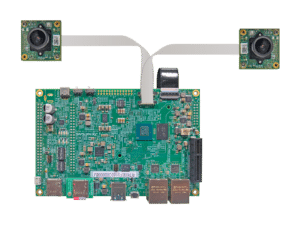
e-con Systems Expands Its Camera Portfolio for the Renesas RZ/V2N MPU in AI-powered Vision Applications
California & Chennai (March 11, 2025): e-con Systems®, a leading provider of embedded vision solutions, continues its strong collaboration with Renesas by supporting the latest high performance RZ/V2N processor, launching at embedded world 2025 in Nuremberg, Germany. Having previously delivered advanced multi-camera solutions for the Renesas RZ/V2H processor, this collaboration further reinforces that e-con Systems
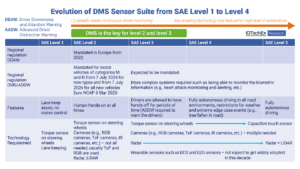
Insights from CES 2025: In-cabin Sensing and Software-defined Vehicles
Regulatory landscape and SAE level. As regulatory frameworks such as the EU’s Advanced Driver Distraction Warning (ADDW) near enforcement, automotive OEMs increasingly integrate in-cabin sensing technologies with software-defined vehicle architectures. This shift, evident at CES 2025, marks a pivotal moment in the automotive industry as OEMs leverage existing hardware—such as infrared and RGB cameras—to develop
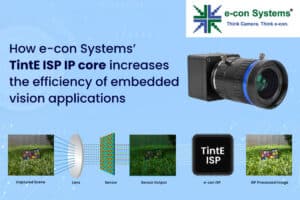
How e-con Systems’ TintE ISP IP Core Increases the Efficiency of Embedded Vision Applications
This blog post was originally published at e-con Systems’ website. It is reprinted here with the permission of e-con Systems. e-con Systems has developed TintE™, a ready to deploy ISP IP core engineered to enhance image quality in camera systems. Built to deliver high performance on leading FPGA platforms, it accelerates real-time image processing with

In-cabin Sensing 2025-2035: Technologies, Opportunities, and Markets
For more information, visit https://www.idtechex.com/en/research-report/in-cabin-sensing-2025-2035-technologies-opportunities-and-markets/1077. The Yearly Market Size for In-cabin Sensors will Exceed $6B by 2035 Regulations like the Advanced Driver Distraction Warning (ADDW) and General Safety Regulation (GSR) are driving the growing importance of in-cabin sensing, particularly driver and occupancy monitoring systems. IDTechEx’s report, “In-Cabin Sensing 2025-2035: Technologies, Opportunities, Markets”, examines these regulations
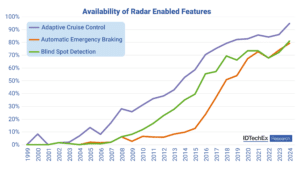
Nearly $1B Flows into Automotive Radar Startups
According to IDTechEx‘s latest report, “Automotive Radar Market 2025-2045: Robotaxis & Autonomous Cars“, newly established radar startups worldwide have raised nearly US$1.2 billion over the past 12 years; approximately US$980 million of which is predominantly directed toward the automotive sector. Through more than 40 funding rounds, these companies have driven the implementation and advancement of
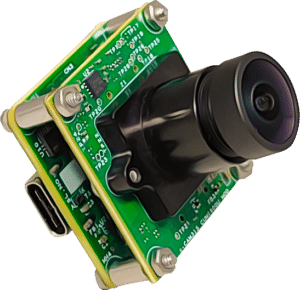
e-con Systems Launches a Sony IMX900-based Global Shutter HDR USB Camera Powered by a High-performance TintE ISP
On-Camera HDR Excellence. Adapts to Any Light Any Motion. California & Chennai (Feb 25, 2025): e-con Systems®, a global leader in embedded vision solutions, is excited to unveil the latest innovation, See3CAM_37CUGM – a 3MP Global Shutter HDR Monochrome USB Camera. Powered by e-con’s high-performance TintE ISP and featuring the Sony® IMX900 sensor, this camera

How FPGAs Are Advancing Next-generation Embedded Vision Applications (Part 2)
This blog post was originally published at e-con Systems’ website. It is reprinted here with the permission of e-con Systems. Field-programmable Gate Arrays (FPGAs) help embedded vision applications meet complex requirements. Discover why FPGAs power next-gen systems with computing power, flexibility, and energy awareness, and learn about their future impact. Embedded vision is a huge
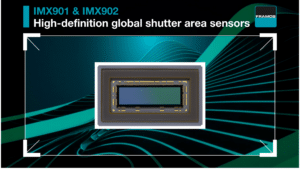
Sony’s High-resolution, High-speed Global Shutter Area Sensors IMX901 and IMX902 are Now Available
FRAMOS now offers the option to pre-order Sony’s wide image size 6k/8k horizontal sensors Munich/Nuremberg, Bavaria, Germany – February 25th, 2025 – After Sony announced its two new high-speed global shutter area sensors, IMX901 and IMX902, with a wide image format and 8K horizontal resolution last summer and delivered the first engineering samples, both sensors
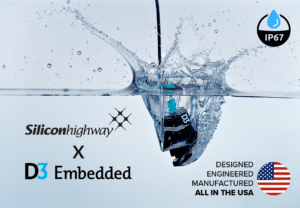
D3 Embedded Partners with Silicon Highway to Provide Rugged Camera Solutions to Europe
Rochester, NY – February 12, 2025 – D3 Embedded today announced its partnership with Silicon Highway, a leading European distribution company specializing in embedded AI edge solutions, to accelerate the delivery of high-performance rugged cameras to the European market. This partnership will allow D3 Embedded to leverage Silicon Highway’s local expertise and knowledge of the

